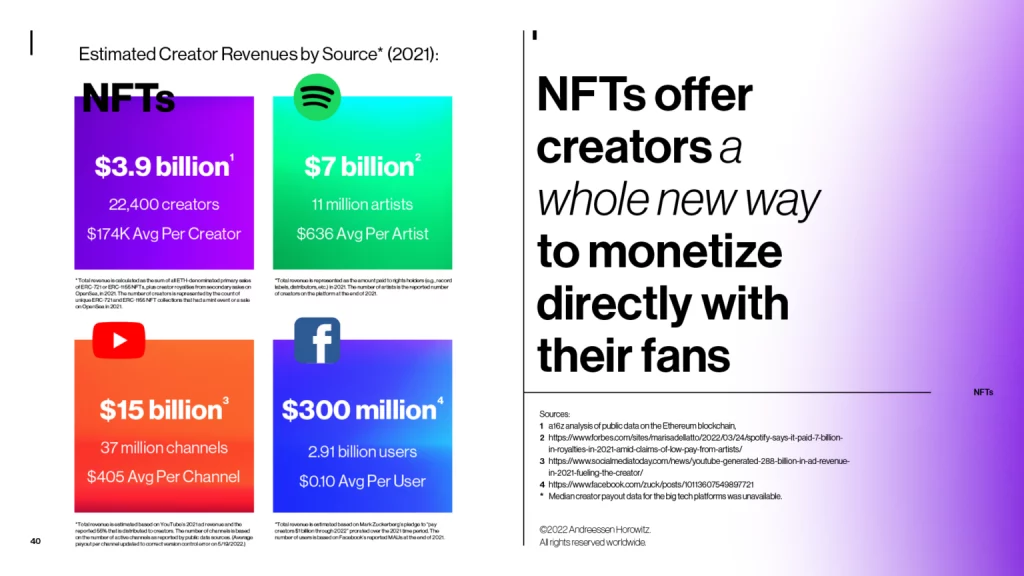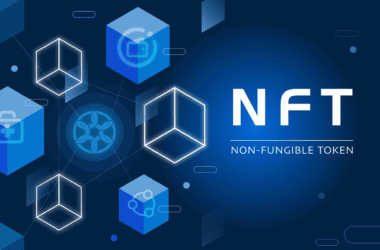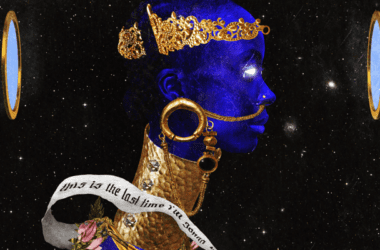Quick take:
- In a report published by Andreessen Horowitz Capital analysts, NFTs are making a significant impact on the creator economy.
- The a16z report indicates Web3 creators earned far more than their Web2 colleagues in 2021.
- The report factors in ERC-721 and ERC-1155 sales and royalties paid to creators from secondary sales on platforms like OpenSea.
The NFT craze may be calming down amid the crypto crash. However, according to a recent report published by Andreessen Horowitz Capital Management analysts, the future of art could rest in the Web3 digital assets.
Analysts Daren Matsuoka, Eddy Lazzarin, Chris Dixon, and Robert Hackett on Tuesday published an industry report titled “Introducing the 2022 State of Crypto Report”, which showed that Web3 creators were more profitable than their Web2 colleagues in 2021.
The report narrows down on five main areas of the industry, including the impact of Web3 on the world, as well as, why it is becoming an important tool for creators.
The report also establishes that despite the significant competition Ethereum continues to face from layer 1 blockchains like Avalanche and Solana, it is still by far the most popular blockchain for developer apps.
But the most intriguing finding that all creators will be drawn to is the difference between the revenue per capita earned by Web3 creators compared to what artists listing their products on Web2 platforms made.
According to the report, NFTs generated $3.9 billion for 22,400 Web3 creators in 2021, resulting in an average revenue per creator of $174,000.


In comparison, Spotify paid $7 billion to 11 million artists, resulting in a per capita income of $636, while the world’s most popular video publishing platform YouTube paid $15 billion to 37 million channels, which equates to an average revenue of $405 per channel.
Elsewhere, Meta Platforms, formerly Facebook dished out $300 million to more than 2.9 billion users, thus averaging just $0.10 per user.
This indicates that NFTs are becoming a far better way to monetise for artists compared to the more established channels of generating income from intellectual properties.
The report factored in Ethereum-based NFTs (ERC-721 and ERC-1155) sales and royalties paid to creators from secondary sales on platforms like OpenSea.
The $3.9 billion nearly quadruples Meta Platform’s projected payment to creators of $1 billion for the year 2022.
Part of this disparity is attributed to the take-rate differences between NFT marketplaces like OpenSea, which takes 2.5% of revenue, as compared to Meta Platform’s ~100% take rate. Even YouTube retains approximately 45% of ad revenue generated by creators.
In a recent announcement, Mark Zuckerberg revealed that Meta’s Horizon Worlds metaverse platform will soon roll out a virtual goods feature on the platform to allow creators to make money from their products within the metaverse.
Soon after, it was revealed that the social media giant will be taking 47.5% in fees from sales, again demonstrating why dedicated Web3 platforms like OpenSea might yet be the preferred option for creators.
Stay up to date:





